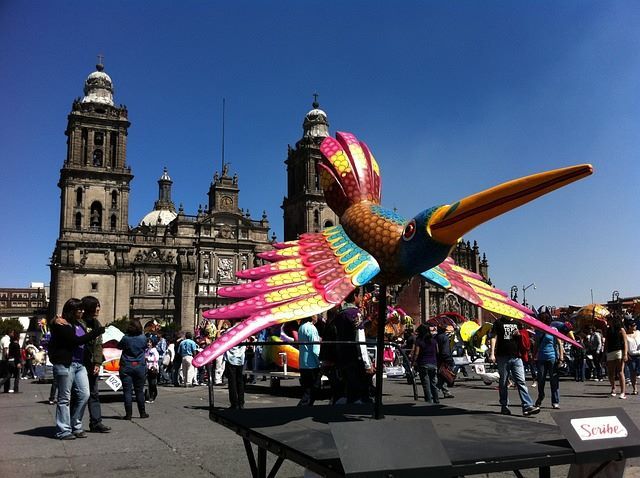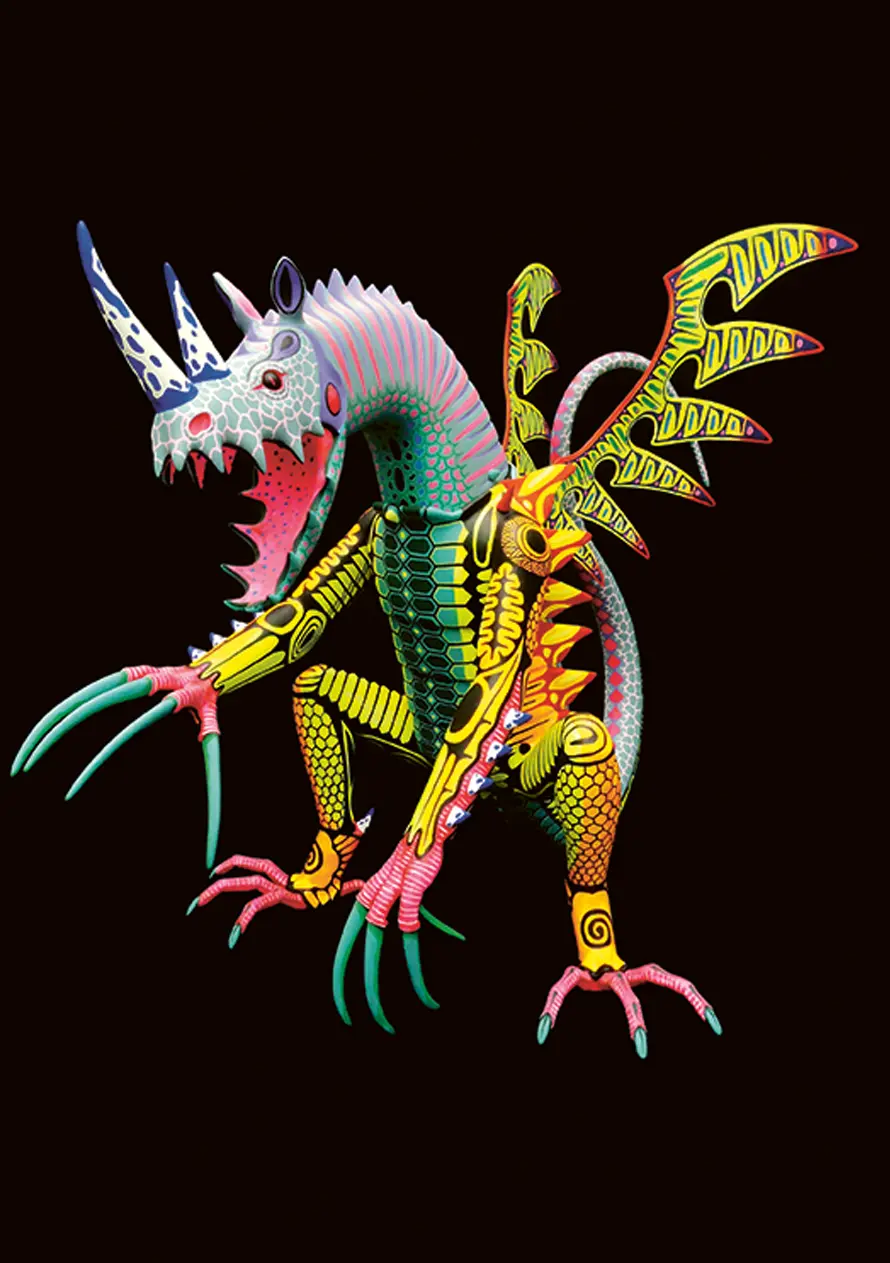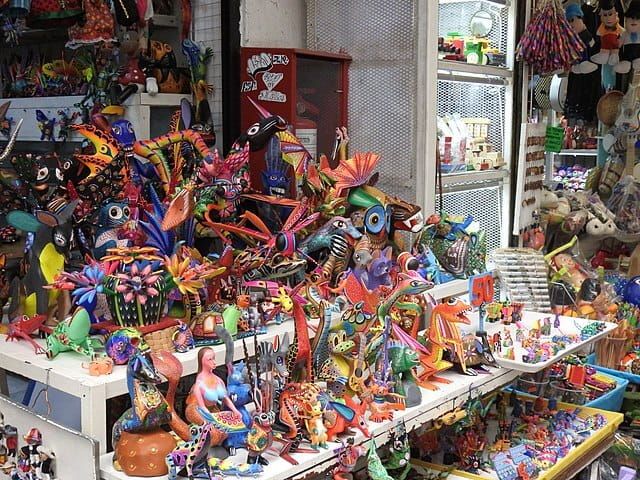Alebrijes: The Colorful and Mystical Creatures of Mexican Folk Art
Discover the magical world of alebrijes, the colorful and mystical creatures of Mexican folk art. Learn about their origins, the artists who brought them to life, and their rise in popularity. Explore the vibrant and intricate designs of these beloved creatures of Mexican culture.

Mexico is known for its vibrant and diverse culture, which is reflected in its art, music, and cuisine. One of the most fascinating and unique aspects of Mexican culture is alebrijes, a type of colorful and mystical creature that has become an iconic symbol of Mexican folk art.
The Origins of Alebrijes
The origins of alebrijes can be traced back to Mesoamerican mythology. According to legend, Quetzalcoatl, the feathered serpent god, created the first alebrijes as a way to protect the dreams and souls of those who slept. The creatures were said to be magical and could help people navigate between the world of the living and the dead.
The art of creating alebrijes as we know them today, however, started in the 20th century. It all began in the small town of Arrazola, in the state of Oaxaca when a man named Don Manuel Jiménez started carving figures out of wood. Jiménez was a farmer who had a talent for carving and had always been fascinated by the alebrijes he had heard about in stories.
Jiménez's carvings were different from the traditional alebrijes in that they were made from a single piece of wood and had a more realistic style. He used bright colors and intricate designs to create creatures that looked like they could come to life. Jiménez's alebrijes were an instant hit and soon became known throughout the region.
The Alebrijes of Pedro Linares
In the 1940s, another artist named Pedro Linares began making alebrijes in Mexico City. Linares was a papier-mâché artist who had been making traditional Judas figures for many years. One day, he fell ill and had a vivid dream about a strange forest filled with colorful creatures. In his dream, the creatures kept repeating the word "alebrijes."
When Linares recovered, he began making the creatures he had seen in his dream out of papier-mâché. His alebrijes were different from Jiménez's in that they were made from multiple pieces of paper glued together and had a more fantastical and surreal style. Linares's alebrijes were also an instant hit and soon became popular throughout Mexico.
The Rise of Alebrijes in Popular Art
Today, alebrijes have become a beloved symbol of Mexican culture and are recognized around the world. The creatures are made in a variety of styles and materials, including wood, papier-mâché, and clay. They are often brightly colored and feature intricate designs and patterns.
Every year in Mexico City, there is a parade of giant alebrijes, where locals and tourists can see the creatures up close and even take part in the procession. The parade is a celebration of Mexican folk art and culture and attracts thousands of people from around the world.
Alebrijes have also been featured in popular media, including the Pixar movie "Coco," which was inspired by Mexican culture and featured a colorful cast of alebrijes. The movie helped to bring the creatures to an even wider audience and sparked a renewed interest in Mexican folk art.

An Interview with Felipe Linares Jr.
Meet Mr. Felipe Linares Jr., the proud successor of his father's legacy in the art of cardboard making. As you enter their workshop, you'll be greeted by a Quixote without his Sancho and a bullfighter armed with his cape and rapier guarding the entrance. The Linares family is credited with the invention of the alebrijes, figures that have become a tradition in Mexican popular culture.
In an interview, Mr. Felipe Linares Jr. shared the origin story of the alebrijes. He revealed that in 1936, his father fell seriously ill with a gastric ulcer and had hallucinations of strange animals shouting "Alebrije, alebrije!" When he woke up, he was about to be veiled as his family thought he was dead. Intrigued and inspired by his visions, he decided to reproduce those dreamlike figures to sell them. Initially, people didn't want to buy them as they were strange and ugly, being completely black. However, with time, his work gained popularity and Diego Rivera himself bought three alebrijes, one of which is exhibited in the Anahuacalli Museum.
With the addition of colors to his work, the boom started. His pieces became sought after by museums, and art galleries, and even went beyond the borders of the country, exhibited in Paris in the middle of the last century. These achievements allowed him to win the National Prize of Arts and Sciences of Mexico in 1990. Mr. Felipe Linares Jr. and his sons continue the legacy of their artisan father, Pedro Linares, who died in 1992. They have participated with their works in the Day of the Dead parades in Mexico City on three occasions.
The Alebrijes Parade, organized by the Museum of Popular Art, was held annually in Mexico City until 2020 when it was suspended due to the COVID-19 pandemic. Felipe Linares Jr. talks about the complexity involved in the creation of the sculptures and mentions that practice and constancy in his work make it easier to work with paste and paper.
These crafts have been taken to the big screen in films such as the iconic "Macario" by Roberto Gavaldón, the adaptation of the story "Can't you hear the dogs barking?" by Juan Rulfo, and the successful Disney production, "Coco". The Linares family's work was also featured in a documentary produced and directed by filmmaker Judith Bronowski that catapulted their art to international fame.
Felipe Linares Jr. expresses pride in teaching alebrijes-making to children in other countries, such as the United States, Switzerland, France, Scotland, and Canada. Although they will not participate in the traditional Day of the Dead parade in Mexico City this year, the public can appreciate their works in the Day of the Dead offering of the Dolores Olmedo Museum in the Aztlan Urban Park in Chapultepec. Between 180 and 200 skulls from the Linares family lineage will be exhibited, all of which are crafted with love, passion, and talent.

Crafting an Alebrije: A Guide to a Unique Mexican Tradition
The art of making alebrijes, a vital part of Mexican culture, has been passed down through generations of skilled artisans. These colorful and intricate sculptures have gained worldwide recognition and are celebrated in the Annual Parade of Monumental Alebrijes in Mexico City.
To create your alebrije, you will need materials such as cardboard sheets, wire, adhesive tape, Resistol, toilet paper, water-based paint, and a plastic container. Follow these instructions:
Step 1: Collect soft and manageable materials like newspaper and cut them into long, small pieces to wrap and form smaller parts of your alebrije.
Step 2: Create a base structure for your creature using wire and shape it with newspaper strips attached to the tape.
Step 3: Apply glue or paste to the strips and mold it into the desired shape. Leave it to dry in the open air.
Step 4: Once the structure is dry, it's time to paint and decorate your alebrije according to your taste and preference.
Immerse yourself in the world of alebrijes and experience the pride of creating one of the most unique and internationally recognized Mexican cultural expressions. Don't miss this opportunity to continue and spread this important tradition.
Conclusion
Alebrijes are a fascinating and unique aspect of Mexican culture. Their origins can be traced back to ancient Mesoamerican mythology, but it was not until the 20th century that they became a popular art form. Today, alebrijes are recognized around the world as a symbol of Mexican folk art and culture. They are loved for their vibrant colors, intricate designs, and mystical qualities, and continue to inspire artists and art lovers.




